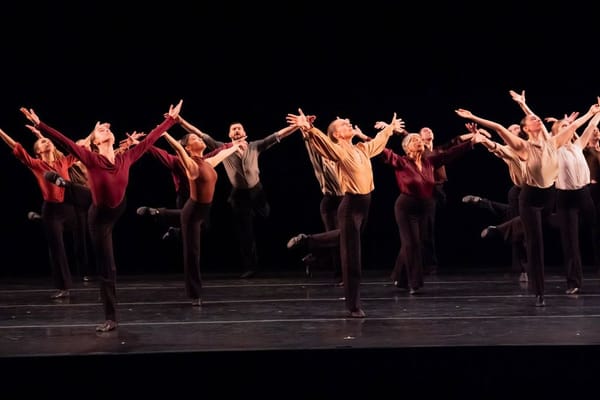Don Quixote Returns

"Don Quixote"
Hungarian National Ballet
David H. Koch Theater
New York, NY
November 9, 2018
Michael Messerer's version of "Don Quixote" was last seen in New York in 2014 danced by the Mihailovsky ballet with supernova superstars Natalia Osipova and Ivan Vasiliev in the leading roles. Four years later, Hungarian National Ballet couldn't field as brilliant a pair of leads -- few companies could -- but other, quieter virtues became apparent this time around.
The curtain opened to reveal a scrim looking like a baroque tapestry full of high stepping hooves, tossed manes and spherical hind quarters. This in turn gave way to a grand space, with, at its center, a table covered in a rug, a design detail probably imported from the Spanish Netherlands. In ran Sancho Panza, with two house maids in hot pursuit, to hide under the table and behind the rug. Discovered, the Don dubbed the fugitive his squire. Sancho kissed the sword once, correctly, then repeatedly as if it were the arm of a beautiful girl. From that moment, we knew these two characters. Don Quixote is a member of the ruling class and as such to be taken seriously, even if his brain is addled by chivalry and romance. Sancho Panza is resourceful, a ladies man, at least in his own mind, and knows which side his bread is buttered on.
Kitri and Basilio occupy a very different space, a small, sunny, landlocked corner of Barcelona, no vistas of the port with their intimation of foreign lands over the horizon, and are part of a small group of friends. This intimacy is one of the charms of this production. The women are simply clad, the friends' skirts in tones of yellow, orange and salmon edged in black. Kitri is seemingly bare-legged due to the heat or financial necessity. There's nothing grand here, which made the appearance of Sancho and the Don, on a real live horse and donkey, a palpable shock, on stage and in the audience.
The rest of the act progressed as expected, full of flirtation, parental pressure and rebellion, until Basilio carried off his Kitri arriving, with act two, at a subterranean tavern. More, much more, ballet-Spanish dancing ensued until Lorenzo, Sancho and the Don arrived and Kitri and Basilio were discovered. Faked suicide, the knight's intervention and parental permission to marry, grudgingly given, followed. Kitri and Basilio's story ended with two scenes and a final act still to come. Sancho and the Don then, arrived at the gypsy camp, a scene which came across as little more than a set up for the vision scene which followed. The performance ended with the very well known pas de deux seemingly tacked on rather than the culmination of a love story and an evening length ballet.
How could a production that began with such attention to context and texture, with such attention to theatrical pacing and logic, peter out? That is the unanswered question and the central disappointment of this production. Perhaps a more charismatic pair of leads could have alleviated, or at least disguised, the problem. As Kitri, Tatiana Melnik delivered rock solid fouettés -- no traveling -- but had no rapport with her partner (the same had been true in "Swan Lake" two nights before). Igor Tsvirko, a recent import from the Bolshoi, looked top-heavy (his costume may have been to blame) and uncomfortable in turns. But he was a very strong partner. The one-handed overhead lifts went off without a hitch, one of them the longest I've ever sat through, amazing as a feat of strength but dubious as an aesthetic choice.
More rewarding were performances in smaller roles, not even credited in the program. Yourim Lee's Amor was clean, crisp, sprightly and mischievous. Minjung Kim's Queen of the Dryads was authoritative without being harsh, her Italian fouettés even and strong. The solo for the lead female gypsy is usually a essay in ersatz sexiness. Lea Földi was a thin, hollow-eyed, a seer terrified by the visions only she could see, almost frightening to watch.
copyright © 2018 by Carol Pardo



